Beaton at Brook Street – An Exhibition Presented by Sibyl Colefax & John Fowler
Cecil Beaton has never gone out of fashion and in 2014 alone there have been three exhibitions and a book launch. His magical ability to make anyone appear utterly glamorous – whatever shape, size or condition – is undoubtedly a major part of the enduring appeal. Perhaps the only person to complain about this may have been the Queen Mother in later life. She apparently felt that Beaton’s implausibly slim portrayal of her, might have made some concessions to the passing years. Perhaps another part of Cecil Beaton’s endless popularity is owed to the extraordinarily wide range and versatility of his output. Alan Jay Lerner, lyricist of My Fair Lady and Gigi, surely wasn’t far off the mark when he remarked that there were numerous Cecil Beatons. “We used to say that inside Cecil Beaton there was another Cecil Beaton sending lots of little Cecils into the world. One did the sets, another did the costumes. A third took the photographs. Another put the sketches in an exhibition, then into magazines, then in a book. Another Cecil photographed the sketches and sold these.” And so it is that as a celebrated photographer, award-winning theatre and costume designer, illustrator, diarist, dandy, socialite and intimate of royalty, Cecil Beaton continues to enchant successive generations.
Circus Bedroom, Ashcombe ©The Cecil Beaton Studio Archive at Sotheby’s
Now another of his skills – interior decoration – is examined with an exhibition in the famous Yellow Room at 39 Brook Street, the London headquarters of Sibyl Colefax & John Fowler. As the latter’s director Roger Jones explains: “We are thrilled to be holding this exhibition at Brook Street. Cecil Beaton’s links with Sibyl Colefax & John Fowler Ltd go back a long way: Lady Colefax was a great friend of Cecil Beaton, as was Nancy Lancaster, who owned the company in the 1950’s. John Fowler and Cecil Beaton also knew one another well, though their relationship was rather prickly at times” – unsurprising perhaps for a man who Jean Cocteau famously referred to as “Malice in Wonderland”. And as Roger Jones explains, “When we saw the wonderful Beaton exhibition at the Salisbury Museum this summer, we felt that its subject-matter, Beaton’s developing tastes and skill as an interior decorator as manifest in his own homes, was a perfect match for us as an interior decorating company.”
The exhibition also marks the launch of Cecil Beaton: Portraits and Profiles by Hugo Vickers, Beaton’s official biographer and literary executor. Photographs from the Cecil Beaton Studio Archive at Sotheby’s, which feature in Vickers’ new book, will be on display throughout the Brook Street showrooms. These will be complemented by the loan of privately-owned oil portraits by Beaton, some of which have never been shown publicly before.
Cecil Beaton at Home is superbly curated by Andrew Ginger, Managing Director of Beaudesert Ltd, whose encyclopaedic knowledge is also matched by his enthusiasm for his subject. Both the Salisbury and London versions of the exhibition help shine a fascinating light on Beaton’s life through the partial recreation of rooms at his various homes by Ginger’s company. We start with Ashcombe and the wild and outlandish decadence you would expect of one of the key members of the ‘Bright Young Things’; then there’s Reddish demonstrating a more seasoned and sober approach, though still high on glamour, and a kind of modern take on the Edwardian styles he so admired; and finally the radically contrasting urbane and well-travelled modernity of his London home at Pelham Place.
The progression of Beaton’s taste is a testament to both his undiminished energy and creativity. It is particularly fascinating to focus on Beaton’s decoration of his own homes when one realises the central part they played in both his social and professional life. Not only were his homes the backdrop to his heady social life, but they were also where he carried out many of his fashion shoots and portraiture. But when you bear in mind that Beaton believed that his success in life was greatly facilitated by the glamorous homes that he had created, this exhibition becomes even more insightful than you might expect. Can interior decoration enhance your life? Cecil Beaton certainly appeared to think so.
Curator Andrew Ginger walks us through the rooms that changed a life…
‘Achieving international acclaim as a photographer, artist, designer, diarist and personality, Sir Cecil Beaton became synonymous with all that was grand and glamorous in the mid 20th century.
Wiltshire entered Cecil Beaton’s life in 1930, at the age of 26, when he leased romantic Ashcombe on Cranborne Chase. He set about creating a back-drop for his weekend parties and photography that would feel deliberately artificial and fantastical.
Gilded and silvered furniture, rococo excess, cherubs, tinsels and pale colours when mixed with leopard skin and great displays of flowers. Cecil’s ‘spirit of gaiety and masquerade’ was in direct opposition to the stolid good taste of the time and his fanciful interiors, seen at their best by candlelight, were set in permanent party mode. Unobserved by parents or chaperones, Ashcombe, or ‘Liberty Hall’ as Rex Whistler inscribed it on the first page of the Visitors’ Book, was to be a place where freedom of expression and creation were paramount.
The celebrated Circus Bedroom at Ashcombe was the apogee, or perhaps inner sanctum, of this temple to theatrical excess. The extraordinary bed, made to Rex Whistler’s design, had a sculpted papier-mâché figure of ‘Father Neptune at the bedhead… flanked by cupids and subaqueous plants. The canopy was held aloft by barley-sugar posts of brass.’
One wet weekend during May 1932 the room was muralled with circus figures by Cecil, Rex Whistler, Lord Berners, Christopher Sykes, Oliver Messel, and the von Reppert-Bismarcks. Naive but sophisticated, the Circus Room epitomises Cecil’s courageous and original approach, combining the childlike thrill of colour, noise and vibrant entertainment with an adult, and indeed expensive, dedication to detail and quality. Only Cecil could take the superficial quite so seriously.
Cecil’s dandyism was a daring statement of originality – an affront to the mediocre, bourgeois values which he despised. He wrote in his memoir of Ashcombe:
“My bedroom was complete, and it delighted me. It further delighted me to see the look of complete bafflement on the faces of my more conventional visitors.”
The gilded party atmosphere of Ashcombe, like the papier-mâché decoration, was not to last beyond the War. The death of friends, the devastation of the blitz and the upheavals and deprivations to all aspects of life brought the masquerade to a close. To make this cataclysm yet more painful, Ashcombe itself was ultimately to be taken from Cecil in 1945 by the landlord who had been delightedly observing the continual improvements at the house over the previous 15 years.
The marriage of Cecil’s two sisters by 1934 and death of his father in 1936 brought Cecil’s mother, Etty, to depends upon him for company and domestic support. Suggesting they share a house, he purchased 8 Pelham Place in January 1940, just has the impending London Blitz was causing an exodus from the capital, making it something of a bargain. Etty, however, preferred to spend the war more safely at Ashcombe.
In London, Cecil took shelter from the air raids in the maid’s basement room. Two bombs fell in the street blowing out the windows and destroying the mirrors. Whilst repairs were slowly undertaken, Cecil retreated to the safety of the Dorchester Hotel and the company of his friends Emerald Cunard and Lady Diana Cooper.
Reddish house was discovered by Cecil with Edith Olivier in February 1947. It lacked Ashcombe’s remote romance, but had exquisite charm in abundance. Few houses as small were ever so richly appointed in classical period details.
Reddish suited Cecil perfectly. One room deep with barely three bedrooms in the main house, it had a grand drawing room, a comfortable library and a secluded five acre garden. Sociable but intimate, grand but affordable, an ornate public facade with hidden depths of complete privacy, Reddish epitomised many of Beaton’s own contradictions.
Reddish appeared in successive magazine features from 1947-1974 in titles including Vogue, House & Garden, Ideal Home, Country Life, Popular Gardening and Woman’s Journal. Despite the relentless depiction of Reddish House as a pinnacle of taste and elegance, it remained the tranquil setting for almost all of Cecil’s creative work and he prized his solitude there. He wrote in an article for Vogue, 1963:
“Like the farmer, I really come to London to do my marketing, and to take further orders, and it is at Reddish that much of the real job is done.”
The drawing room occupied an extension to the original Queen Anne house, decorated with a French classical ceiling Rose of flower garlands. Taking this as his theme, and benefiting from his highly lucrative film projects with Alexander Korda which required prop-sourcing visits to Paris, Cecil added a Louis XV chimney piece, a fine Louis XVI trumeau and an Aubusson carpet. ‘Crushed blackberry’ velvet covered the walls and gold satin curtains appliquéd in plum coloured silk velvet, to Cecil’s own highly complex design, hung at the windows.
In 1956 the drawing room was enlarged with the niched apse and the curtains and carpet replaced. The room was recreated into a nostalgic essay in the Edwardian elegance that continually inspired Cecil, with readily apparent similarities to his stage designs. In his book ‘My Bolivian Aunt’, he described it as:
“My Lady Windermere’s Fan-decor drawing room.”
The Winter Garden, created between the old house and the newly extended drawing room also in 1956, was an inspired addition. It created a tranquil, intimate space for all weathers where the scent of tuberoses, jasmine and asiatic lilies could be savoured whilst a fountain trickled into the Islamic shaped pool.
Cecil’s mother died in the spring of 1962 and he was immediately aware of the passing of time and the need to reinvent himself for a new stage of life. He distracted himself with recreating the rooms of Pelham Place as a contemporary setting for himself. The bold result was a physical manifestation of his polished London persona.
Combining the two ground floor rooms, Cecil covered the walls above the white dado in black velvet edged with the silver gilt trim, such as that used on a matador’s tunic. The velvet was the perfect foil for several large scale abstract paintings, some of which he had owned since the 1930s. Simple, rectangular corner banquettes with Greek style bronze legs were matched with round 1960s tub chairs in knobbly red and gold linens.
Lamps by Giacometti, a vase by Picasso and portraits of himself by Tchelitchew and Berard reminded the visitor that Cecil was at the peak of his career and that the great artists of the 20th century were all to be found in his address book. Cecil mixed decorative styles and periods with confident élan. The ensemble was completed by African tribal masks, Japanese Obi sashes made into cushions and several antique gilded Buddhas alluding to his global travel and influence.
As a child, Cecil had loved the ladies of the Edwardian stage and pined to live among scenery. He never lost his love of artifice and magical effect, nor his understanding of the importance of self promotion through interior design. Writing in his diary as early as October 1925, he recognised:
“One can’t get on at all if one doesn’t have a little glamour about one’s home.”
Cecil’s passion for an original, theatrical environment had developed in sophistication from the naive excitement of Ashcombe. Reddish was his retreat romantic creative inspiration, whilst the stylish, poised and polished rooms of London became the stage for Cecil’s ambitious social and career achievements.
Dramatic, stylish and flamboyant, Cecil Beaton’s interiors were as intricately crafted as his own persona. As the self-observing outsider, he could truly be his own created self at home.’ (text ©Andrew Ginger)
‘Beaton at Brook Street’ an exhibition presented by Sibyl Colefax & John Fowler. 18 November – 5 December 2014. The exhibition would not have been possible without the generous support of Sotheby’s Cecil Beaton Studio Archive. This exhibition is also a rare opportunity to acquire modern high quality silver gelatine prints from Sotheby’s that are taken from Beaton’s original negatives and printed especially for this exhibition, that are not otherwise generally available for sale.
Cecil Beaton: Portraits and Profiles by Hugo Vickers is published by Frances Lincoln, RRP £30
To order ‘Cecil Beaton: Portraits and Profiles’ at our insider price please visit GDC interiors Book Collection powered by Amazon
Main image: Cecil Beaton, self portrait ©The Cecil Beaton Studio Archive at Sotheby’s






















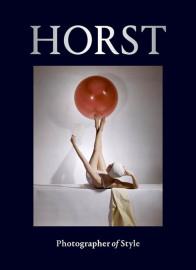
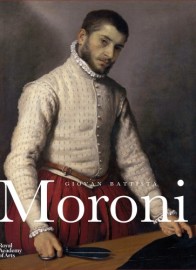
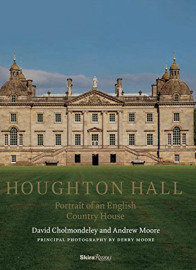
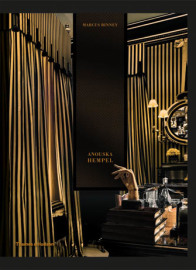
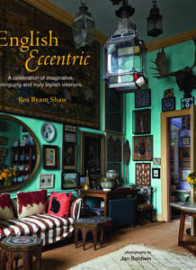
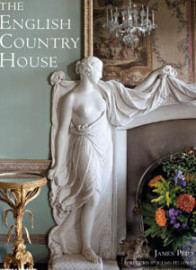

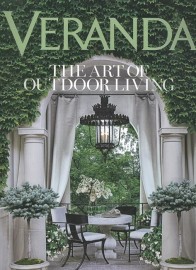
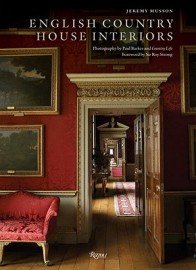
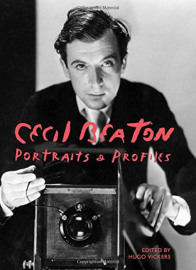
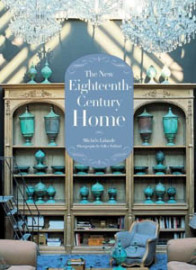
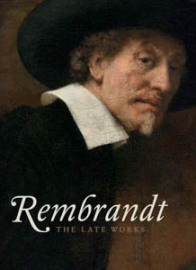
Dr Benjamin Wild via Twitter @wilddoughnut 58 minutes ago
@GDCinteriors, a wonderful article!